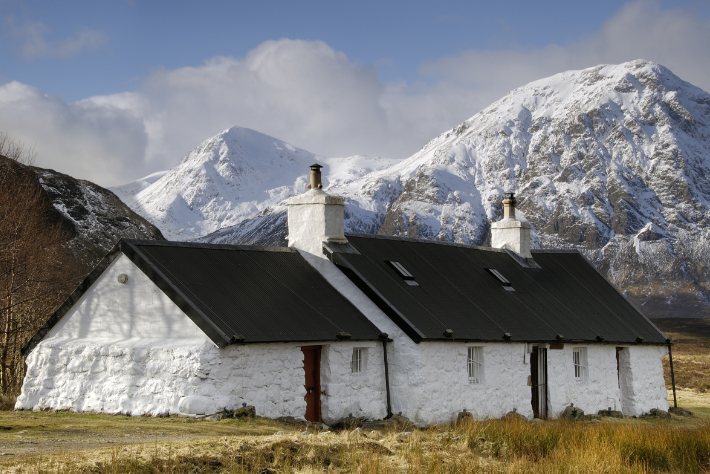- Home
- Scotland's changing climate
- Urban Housing in Scotland
- Maintenance
- Ventilation
- Airtightness
- Insulation
- Lofts - insulation at ceiling level
- Lofts - insulation at rafter level
- Cavity wall insulation
- Solid Walls: Internal vs External Insulation
- Internal Solid Wall Insulation (IWI)
- External Solid Wall Insulation (EWI)
- Timber frame retrofit
- Windows and doors
- Openings in 'historical' buildings
- Openings in 'non-historical' buildings
- Ground floors
- Suspended floors
- Suspended floors - from below
- Suspended floors - from above
- Solid floors
- Insulation materials
- Building science
- Space heating
- Solar energy
- Product Selector
Solid Walls: Internal Insulation (IWI) vs External Insulation (EWI)
• About a quarter of all buildings in Scotland are solid walled, usually stone but sometimes brick or concrete.
• Many remain uninsulated, and a significant part of the Scottish Government’s spend in the next few years will be on wall insulation, so it is worth taking a moment to consider the ‘best’ option.
• SAP does not differentiate between internal and external insulation of solid walls and concentrates instead on the U-value required, which can be achieved using either method.

Internal insulation advantages:
• It's usually cheaper (this depends very greatly on circumstance).
• No external alterations are required, so there are no issues with planning or with neighbours.
• No restrictions on when the work is carried out due to season or bad weather.
• No restrictions related to the building type or location (e.g., high-rise blocks)
• Usually, there is no need for specialist installers. DIY is possible, which can also make it cheaper.
Internal insulation disadvantages:
• The need to decant occupants or have empty properties.
• The loss of internal space, although this is more critical in smaller spaces.
• In some cases, work can be complex, for example, where there is cornicing, extensive servicing or historic internal linings and facings. 9. in some cases, there may be issues with fixing heavy loads to less robust internal finishes
• Thermal bridging (via internal structure) can lead to problems and reduces the efficacy of any measures installed
The universal risks associated with internal insulation:
1- Lack of protection from the weather. Unless the wall and all joints are very well maintained, there is a risk that water can still enter the wall, for example, via cracks, leaks or just soft stone / joins. Climate change will exacerbate these concerns with windier and wetter weather. Combined with non-breathable insulation (see below), internally insulated walls are more susceptible to damage and decay over time. Put another way, one of the biggest advantages of external insulation is that it can save you from carrying out maintenance that would otherwise have been necessary because you are providing a new exterior finish.
2- Wall isolated from the warmth of the house. Insulating on the inside means that the solid wall becomes separated from the warmth of the internal rooms and becomes cold for extended periods. This increases the risk of interstitial condensation occurring within the wall, usually near the interface of insulation and existing solid wall, where it is more difficult to escape. This is less of a problem with breathable internal insulation, but these are more rarely used.
3- Non-breathable insulants. The most common insulants used are non-breathable. Using these internally means the wall cannot dry out towards the inside as it often did before. When linked to both points above, with interstitial condensation forming in the centre of the wall and rainwater potentially entering from the outside, the moisture load on the wall is raised considerably, creating several potential long-term problems.
4- Isolating the thermal mass potential. Insulating internally involves isolating the available thermal mass, meaning the resultant space does not benefit from its capacity for thermal buffering. Suppose this is coupled with a lack of hygroscopic (moisture) buffering depending on the heating and ventilation regime. In that case, this can lead to increased fluctuation in temperatures and relative humidity, which is associated with increased health risks.
5- Thermal bridging and air leakage. The issue of thermal bridging and air leakage means that internal insulation is inherently limited in energy saving unless carried out meticulously.
Although they are not well known, these five characteristics of internal insulation represent considerable risks to the essential health of both the occupants and the building fabric itself, meaning that energy savings can be less than anticipated. For the reasons above, we think that in most cases, internal wall insulation should NOT be done. If it is, then the following guidance will ensure that the anticipated savings are realised and that the health of both occupants and the building is safeguarded.